The Vietnamese Ao Dai originated centuries ago among a specific group. It has evolved into the national attire of Vietnam, undergoing significant transformations in design and style over time. In this article, let’s explore its rich history and enduring allure and unveil the remarkable journey of this iconic garment.
What is Ao Dai and Its Significance
Ao Dai, Vietnam’s traditional attire, holds profound cultural significance and symbolizes the elegance and grace of Vietnamese women. The term “Ao Dai” translates to “long dress” in English, reflecting its characteristic design, which typically consists of a long, form-fitting dress with a high collar and long sleeves, worn over loose-fitting trousers. This iconic garment is a symbol of national identity and pride, embodying the timeless beauty and sophistication of Vietnamese culture.
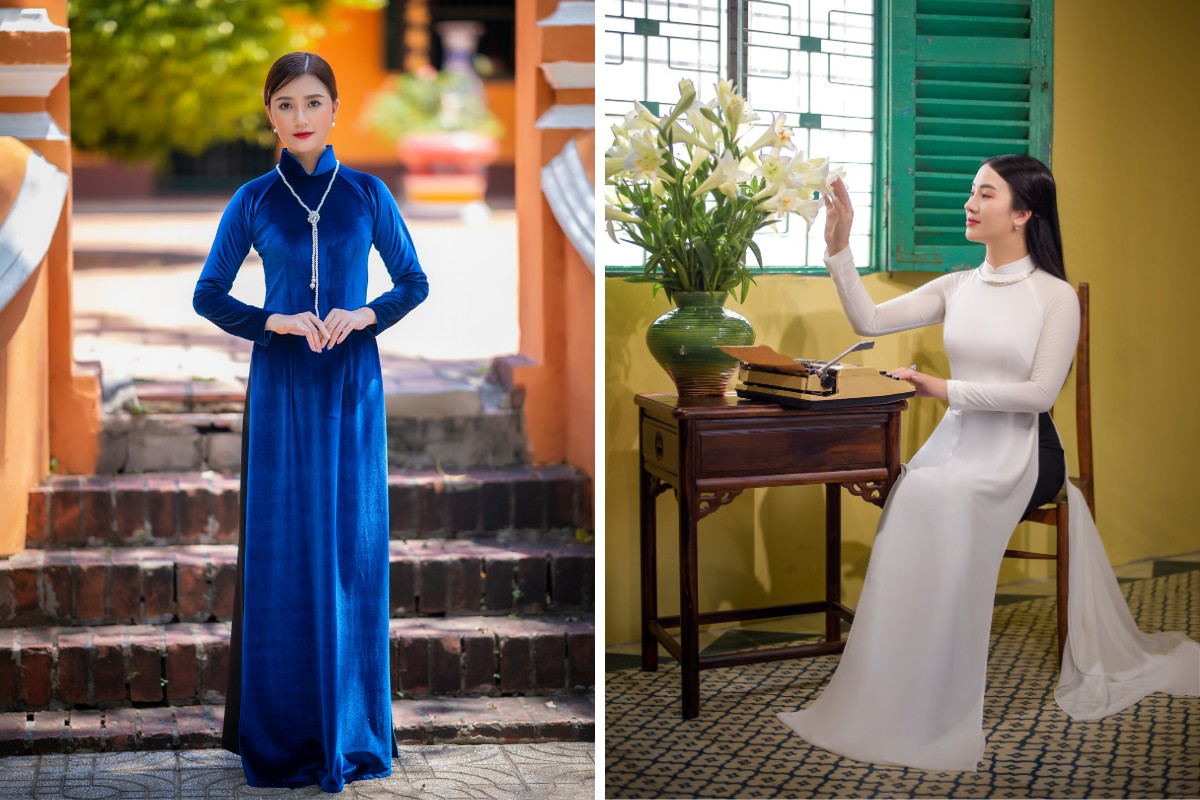
Here are some key points highlighting the significance of Vietnamese ao dai dress:
- Cultural heritage: Ao Dai has been an integral part of Vietnamese culture for centuries, representing traditional values and customs passed down through generations.
- Symbol of femininity: Ao Dai accentuates the graceful curves of Vietnamese women, emphasizing modesty and elegance.
- Contemporary adaptation: While maintaining its traditional essence, Ao Dai has also evolved to incorporate modern designs and fabrics, reflecting the dynamic nature of Vietnamese fashion.
- Global recognition: Ao Dai has gained international acclaim for its timeless beauty and cultural significance, representing Vietnam’s unique identity on the global stage.
More Facts about Vietnam's Culture
The story of Vietnamese Ao Dai
The precursor of the Vietnamese Ao Dai was the “ao giao linh.” By the 17th century, it evolved into the “ao tu than” design to facilitate women’s labor and production. During the reign of King Gia Long, the “ao ngu than” appeared, followed by variations like the Lemur, Le Pho, and Raglan styles. In 1970, the modern Vietnamese Ao Dai emerged, preserving its essence to this day.
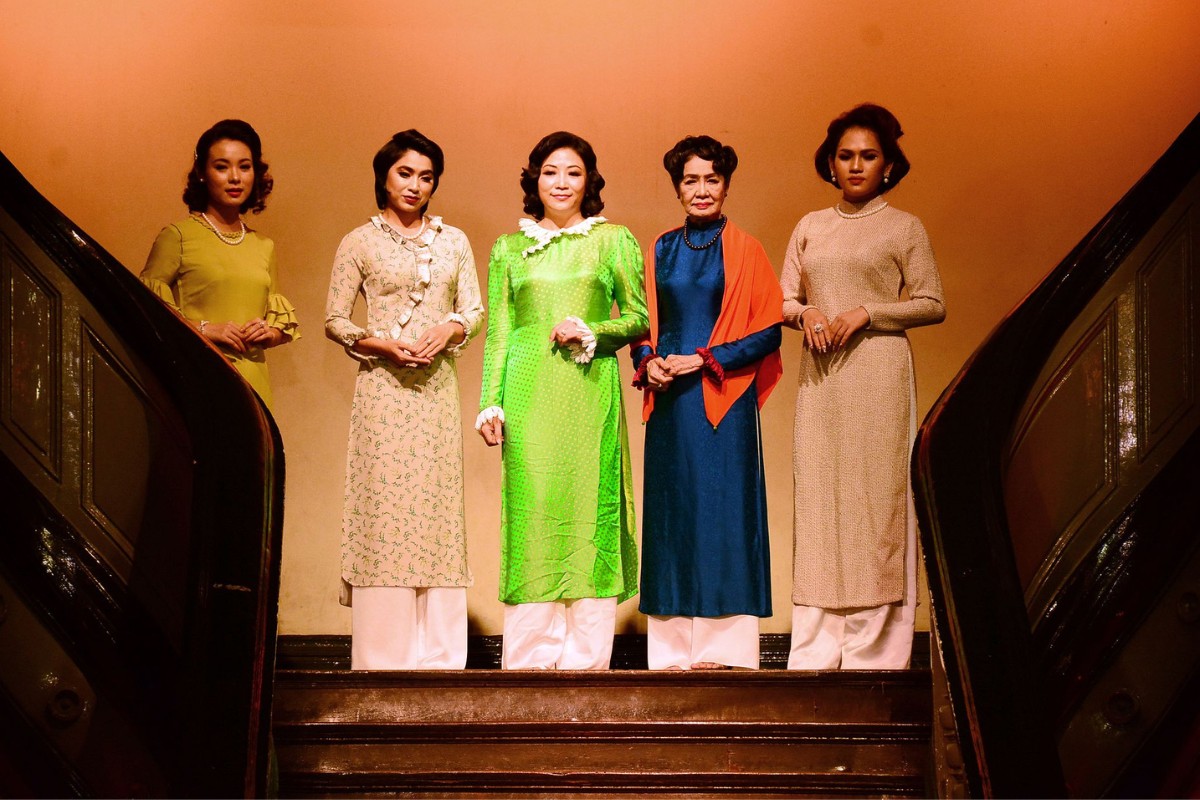
Throughout its history, the Ao Dai has transformed materials and styles, ranging from modern to avant-garde. Designers have innovated with wedding Ao Dai and contemporary versions featuring intricate details like beadwork, embroidery, and embellishments. Despite these variations, the traditional Ao Dai of Vietnamese women retains its graceful, fluid, and modest charm, unmatched by any other attire.
Various Styles of Vietnamese Ao Dai
Exploring the various styles of Ao Dai Vietnam offers a glimpse into the diversity and evolution of this iconic Vietnamese garment.
Ao Tu Than – Four-piece Ao Dai (17th century)
In the 17th century, Vietnamese innovation saw the evolution of the “Ao Giao Lanh” into the four-piece “Ao Tu Than.” This attire featured two front flaps that could be tied for convenience during farming and trading. Comprising a long skirt, “Yem” (an ancient undergarment), and silk belt, the Ao Tu Than was typically crafted from black fabric to resist dirt. Urban women of higher status donned the refined “Ao Ngu Than,” a variation of the Ao Tu Than with sewn-together flaps and a covered fifth flap, showcasing elegance. Affluent individuals continued to embrace this style well into the 20th century.
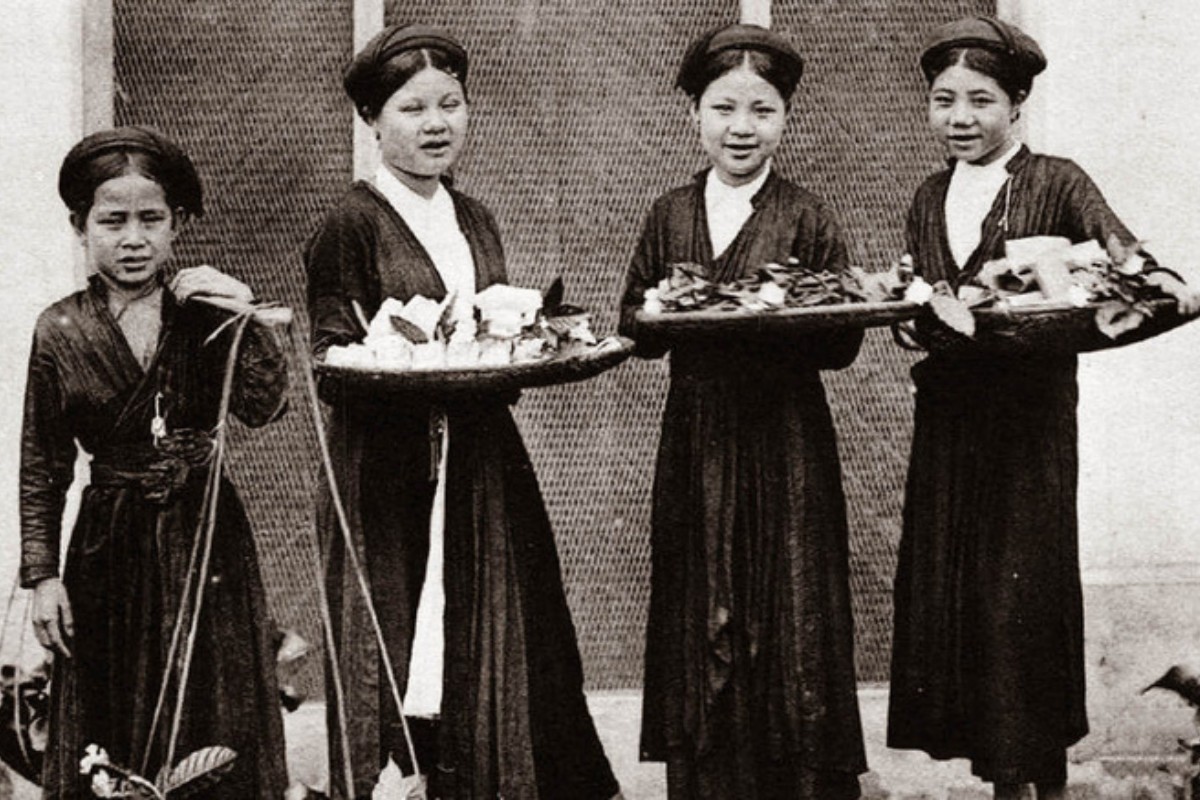
Lemur Ao Dai
The Lemur Ao Dai, derived from the five-piece Ao Dai by artist Cat Tuong in 1939, features only two front and back flaps, with the front one extending to the ground. Known by its French name, Lemur Ao Dai is a snug-fitting garment with straight sleeves and small edges. The button line opens to the side, accentuating femininity. Despite its popularity until 1943, the Lemur Ao Dai eventually faded into obscurity.
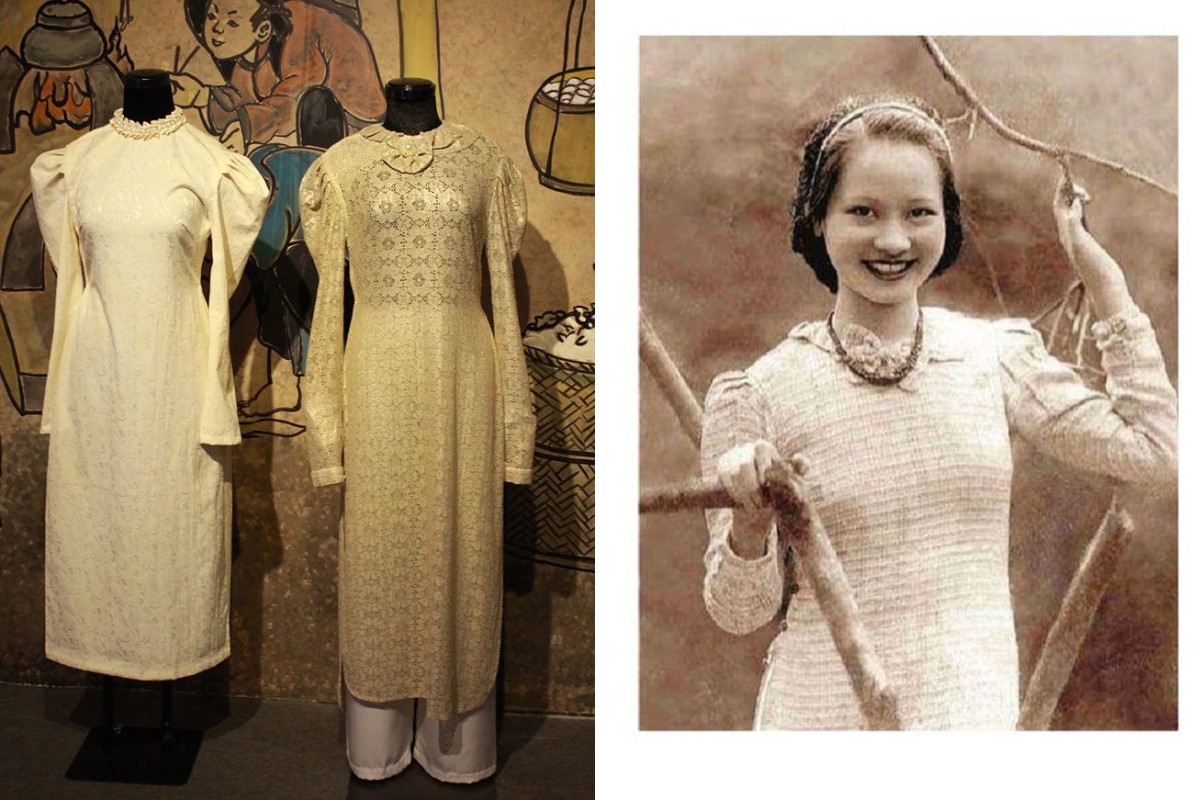
Le Pho Ao Dai
The “Le Pho Ao Dai” is a modern adaptation originating from the four-piece Ao Dai and a variation of the Lemur Ao Dai by artist Le Pho, hence its name. By slimming down the dimensions to embrace the Vietnamese woman’s figure, Le Pho emphasized snug fits, raised shoulders, elongated hems touching the ground, and introduced vibrant colors. Essentially, she rendered it more sensual, sophisticated, and captivating. By shedding Western influences in favor of elements from the four-piece Ao Dai, Le Pho revolutionized the garment. Consequently, from this point until the 1950s, the women’s Ao Dai style gained immense popularity within the nation’s tradition.

Modern Ao Dai
In response to the fashion industry’s growth and globalization, modern Ao Dai in Vietnam has evolved to incorporate trendy elements while preserving its traditional allure and silhouette. It now features various Ao Dai fabrics and can be paired with jeans or loose silk pants. However, despite these adaptations, Ao Dai retains its significance for special occasions like weddings and traditional festivals. Today, it continues to symbolize elegance and cultural heritage, serving as a cherished attire for significant events in Vietnamese culture.
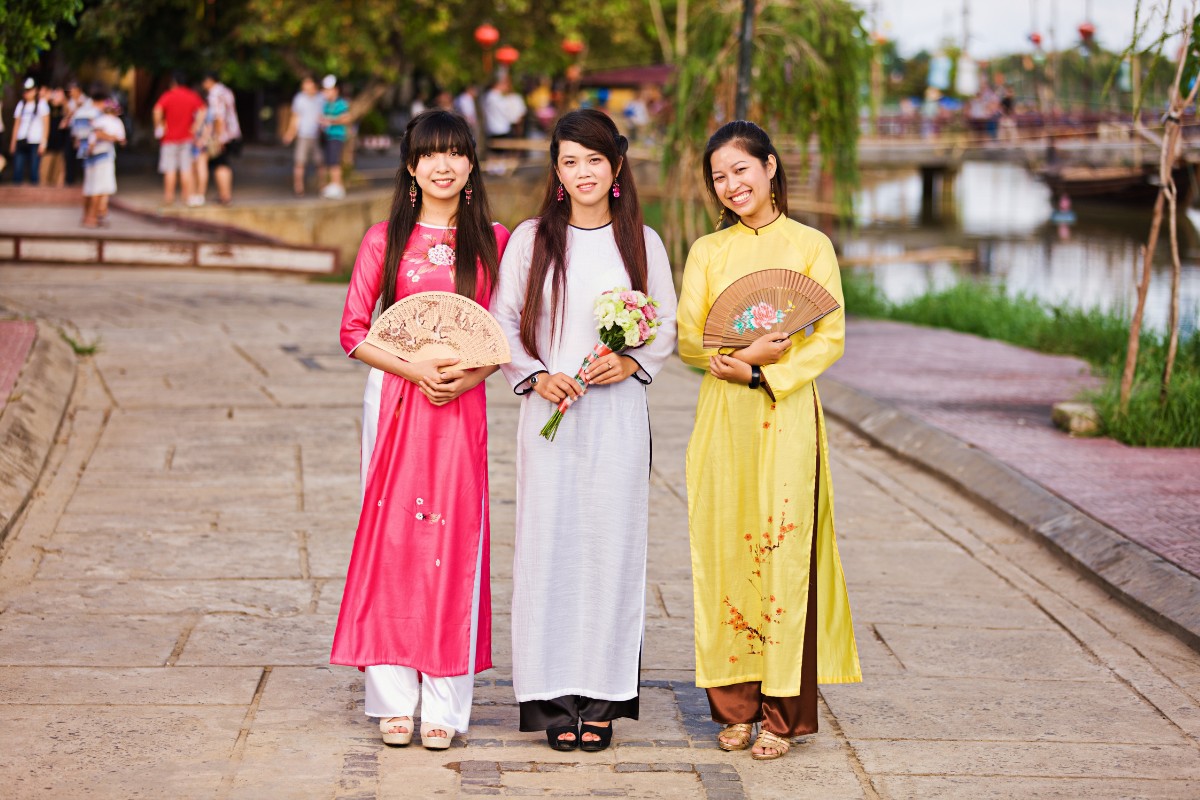
When to Wear Vietnamese Ao Dai
Understanding the appropriate occasions to wear Ao Dai provides insight into cultural significance.
At Tet Holiday
People wear Ao Dai Tet to prompt the traditional, signifying formality, respect for elders, and cultural heritage. Ao Dai’s prominence during Tet holiday reflects its role in fostering a festive ambiance and honoring familial traditions. Today, a variety of stylish Ao Dai designs cater to Tet’s vibrant celebrations, featuring shortened layers and lightweight fabrics like silk or linen. Red, yellow, and vibrant hues dominate Vietnamese Ao Dai selections during Tet, symbolizing prosperity and good fortune. During Tet, all family members, including men and children, don Ao Dai for family gatherings, festive photoshoots, and temple visits, preserving tradition and welcoming a prosperous new year.
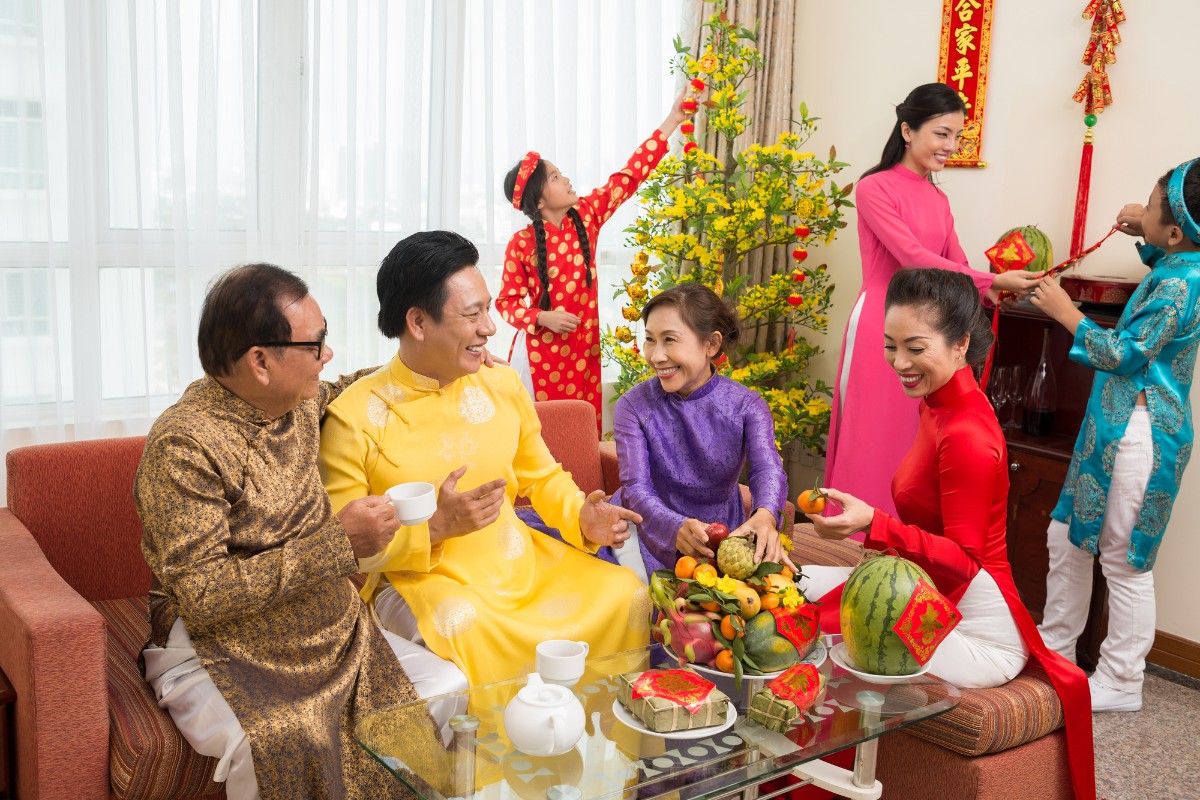
At Wedding
In traditional Vietnamese weddings, Ao Dai wedding was once customary attire, but Western dresses now dominate due to globalization. However, contemporary Ao Dai designs blend tradition with modern styles, appealing to couples seeking both elegance and modernity. Many weddings now incorporate Ao Dai for traditional ceremonies, paired with Western attire for receptions. The bridal couple, their families, and attendants often wear Vietnamese Ao Dai in vibrant colors, symbolizing joy. Due to its cultural significance, couples often rent Ao Dai for weddings, recognizing its importance amidst evolving customs.
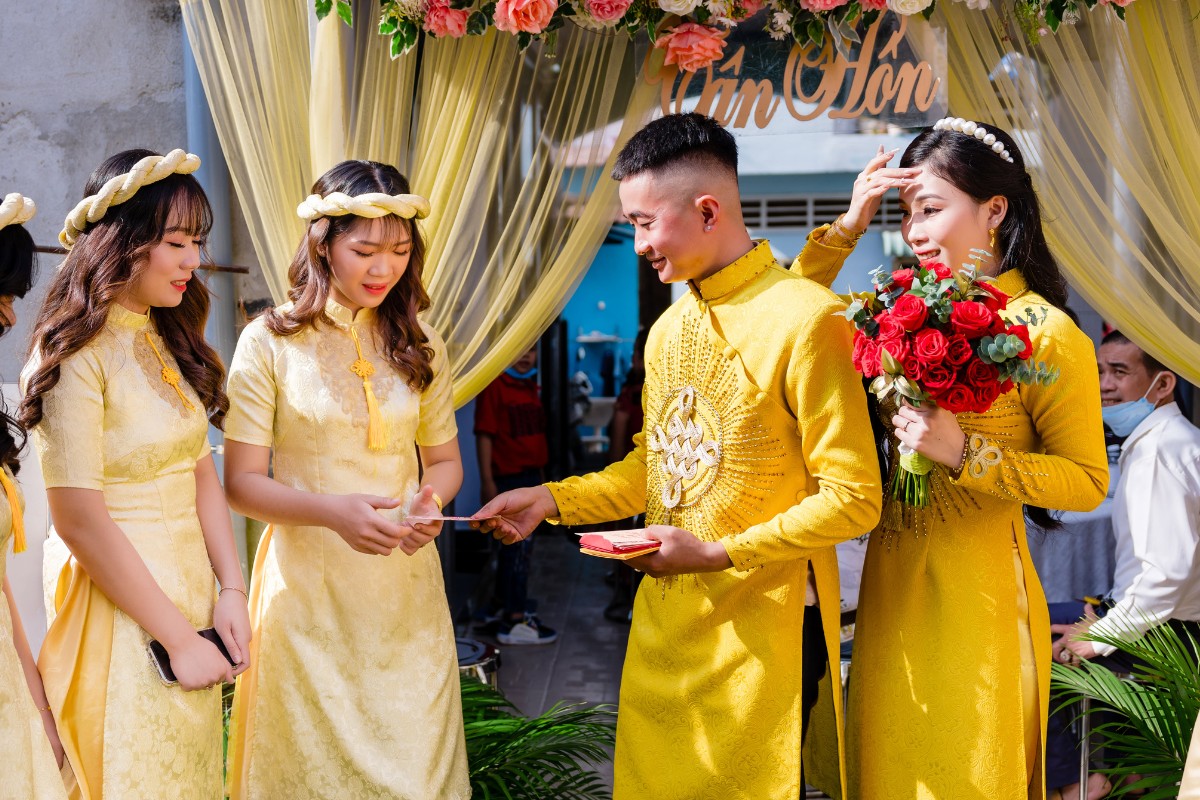
Student’s wearing white Ao Dai
Female high school students don white Ao Dai as part of a cultural preservation initiative. Most high schools mandate the traditional dress code on Mondays, leading to a graceful and pure aesthetic among students. The choice of white Ao Dai, paired with silk pants, ensures comfort and coolness, facilitating a conducive learning environment. This practice not only upholds Vietnamese heritage but also instills a sense of tradition and elegance in students, fostering a connection to their cultural roots while navigating their academic pursuits.
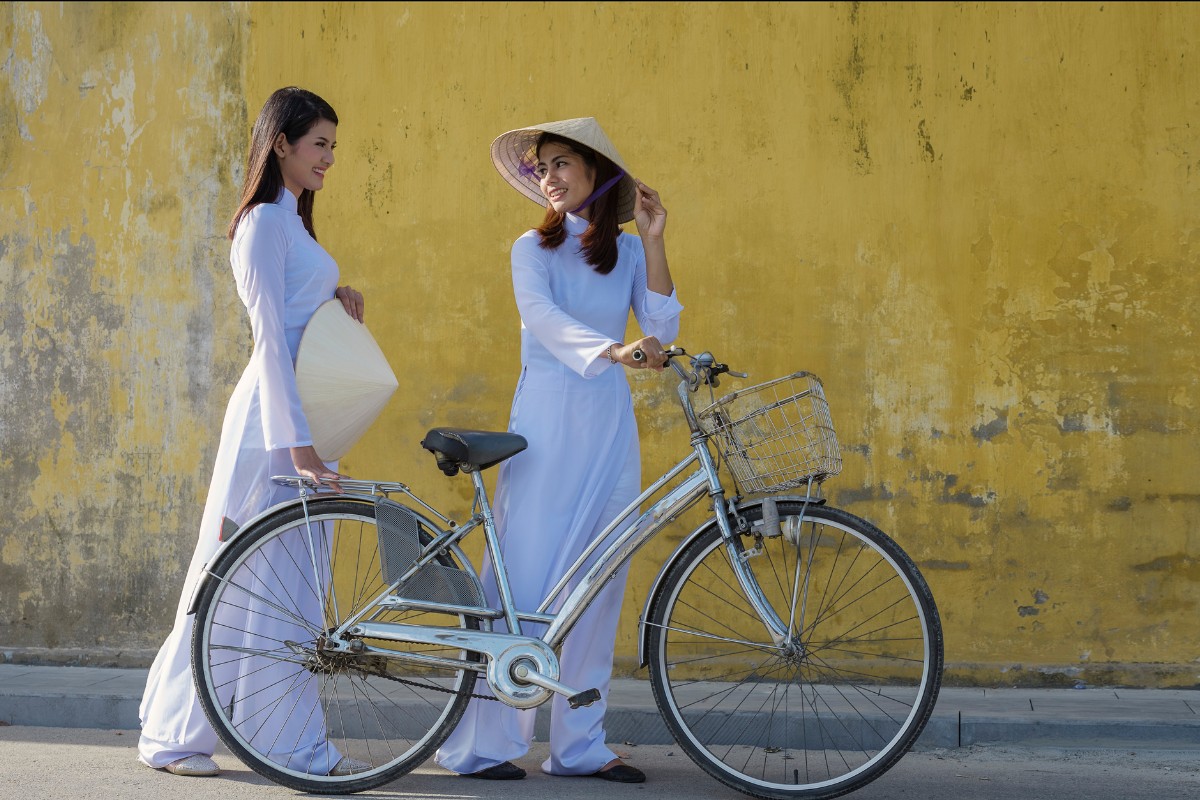
Other occasions
Beyond weddings and formal events, Ao Dai Vietnam is also worn on various occasions such as cultural festivals, graduation ceremonies, and religious events. During cultural festivals, individuals showcase their pride in Vietnamese heritage by donning Ao Dai, reflecting a sense of national identity and unity. Graduation ceremonies often feature students clad in Ao Dai as a symbol of academic achievement and cultural tradition. Additionally, Ao Dai is worn during religious events, embodying reverence and respect. Its versatility allows it to flexible transition between different occasions, representing elegance, tradition, and cultural significance in Vietnamese society.
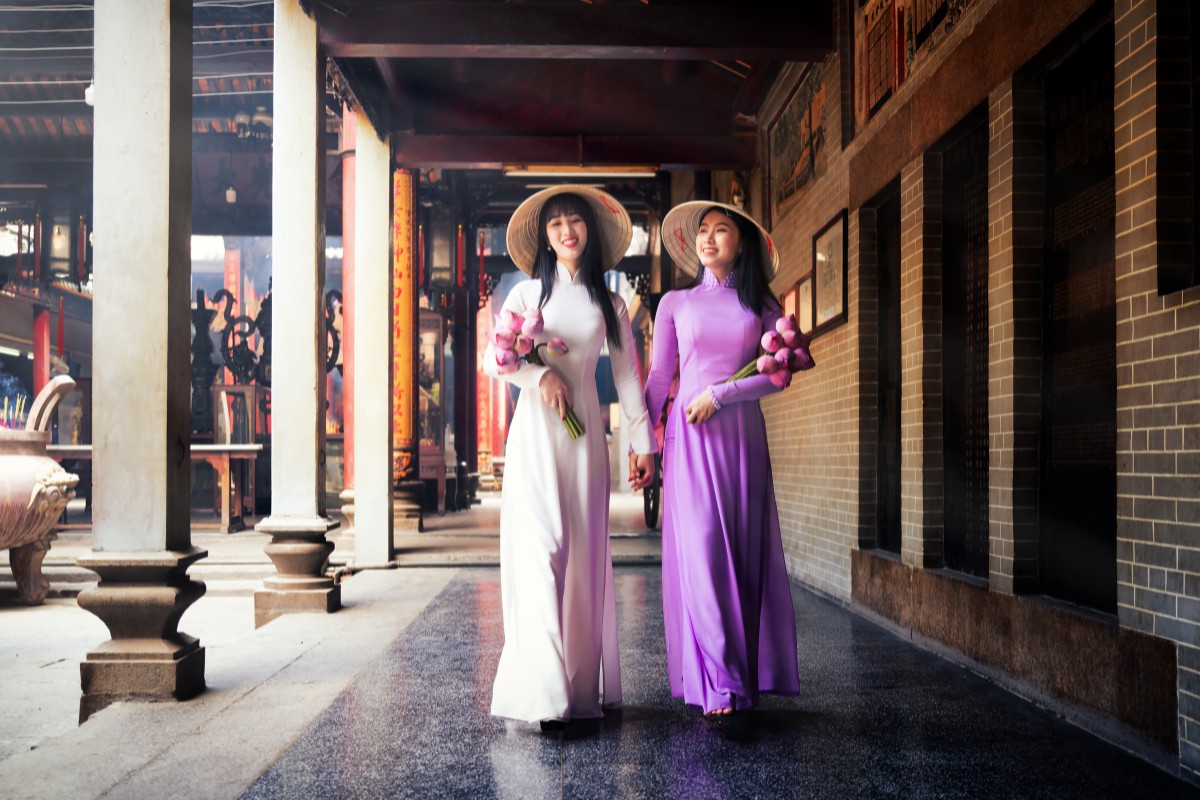
Tip to Choose and Wear Ao Dai
Choosing and wearing Vietnamese Ao Dai involves the following considerations.
Tips to choose a suitable Ao Dai Vietnam
When selecting a Vietnamese Ao Dai, several factors should be considered:
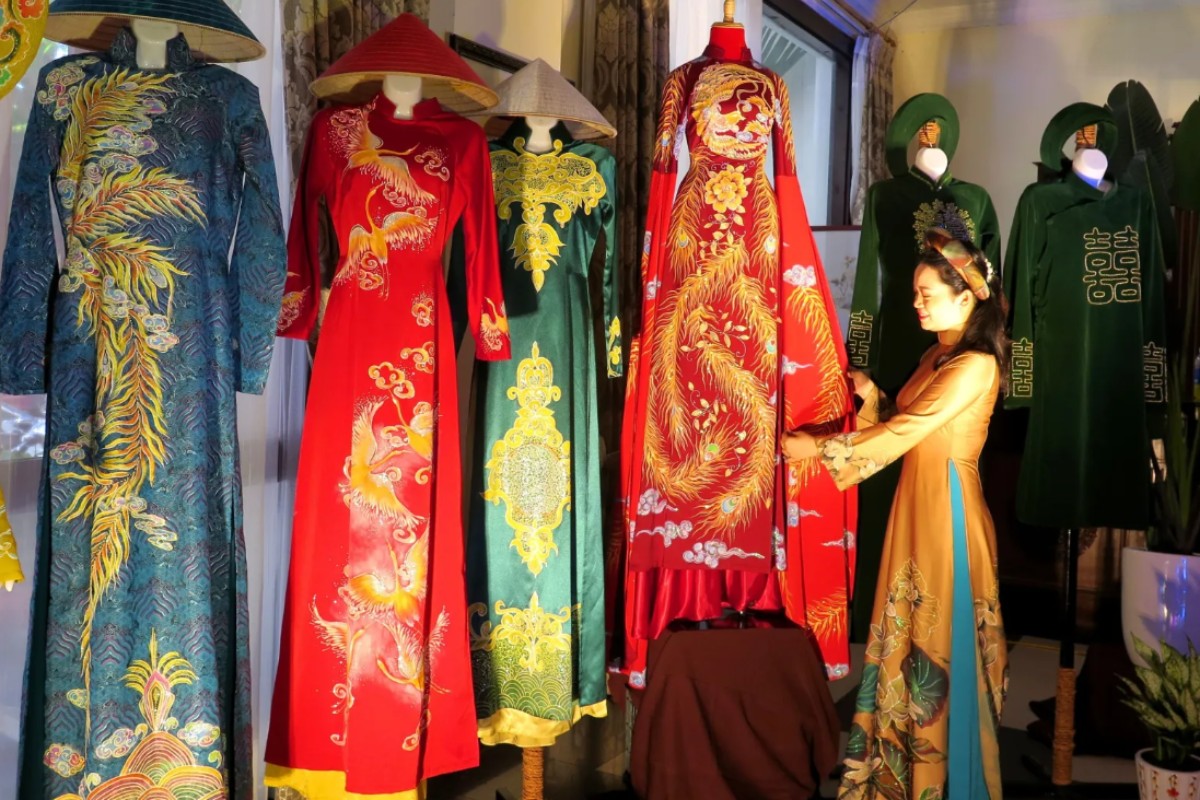
- Material: Opt for comfortable fabrics like silk or linen, as they complement the body’s curves well while providing comfort. Avoid thin materials like chiffon, which may reveal too much skin.
- Color and Patterns: Choose colors and patterns that suit your body shape. Dark colors and small patterns can create a slimming effect on rounder figures, while bright colors and larger patterns add volume to thinner frames.
- Designs of Ao Dai: Consider the occasion when choosing the design. Stylized Ao Dai are ideal for photoshoots and outdoor activities due to their convenience and trendy designs. Traditional Ao Dai, on the other hand, are more suitable for formal meetings or cultural festivals, reflecting respect and tradition.
Tips to wear Ao Dai Vietnam
When wearing Vietnamese Ao Dai, consider the following tips:
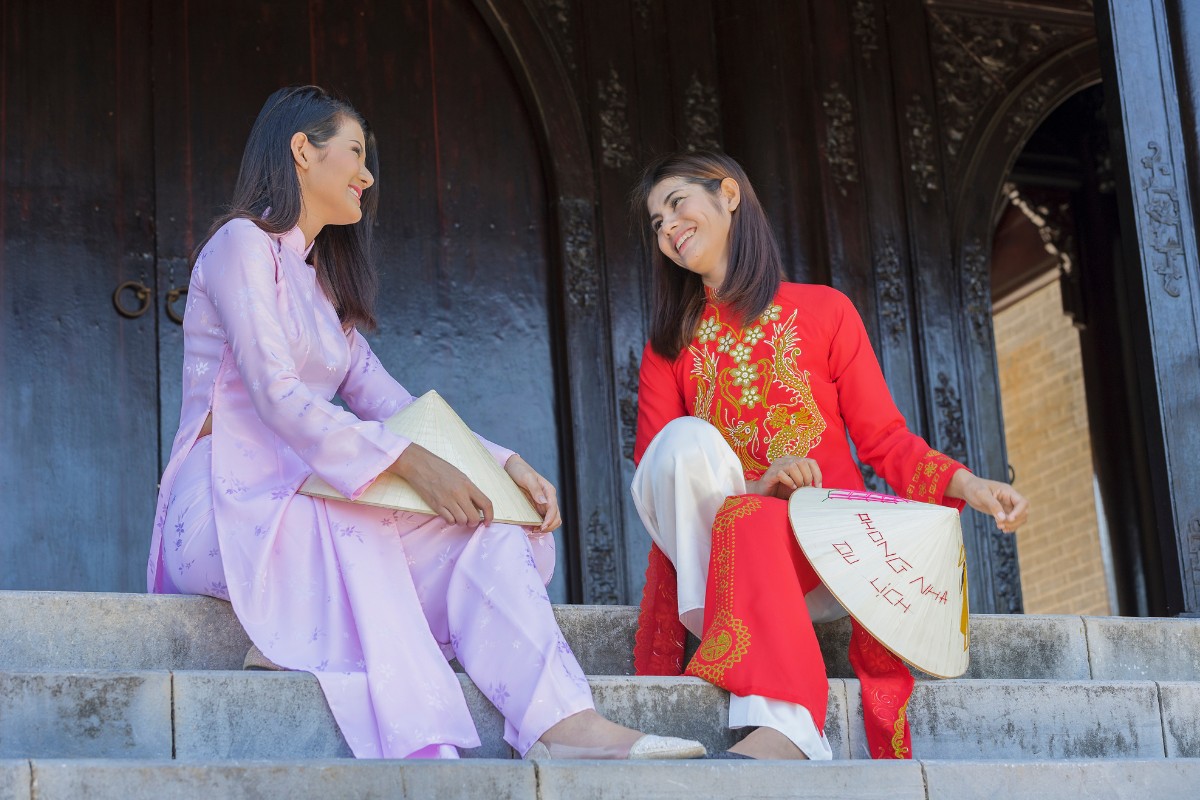
- Choose suitable lingerie: Select underwear that matches your Ao Dai’s color, preferably in bright shades. Opt for bras specifically designed for Ao Dai to provide proper shaping.
- Mix with appropriate accessories: For formal events or traditional festivals, accessorize Ao Dai with high heels, silk scarves, and jewelry to complement the formal setting. In casual settings, feel free to mix Ao Dai with various accessories of your choice.
- Behavior when wearing Ao Dai: Given its elegance, pay attention to posture, gestures, and movement, as they greatly influence the overall appearance of Ao Dai.
Where to Sew or Rent Ao Dai in Vietnam
Discovering reputable locations to sew or rent Ao Dai in Vietnam ensures access to authentic attire.
Where to Sew Vietnamese Ao Dai
To craft your own Vietnamese Ao Dai, opt for renowned tailor shops renowned for their expertise in tailoring this elegant attire. These shops ensure a perfect fit, accentuating the female body’s curves, a unique feature of the Ao Dai. Prices range from US$50 to US$150, depending on your chosen material. In Hanoi and Ho Chi Minh City, prestigious tailor shops below offer exceptional craftsmanship and customization to create your ideal Ao Dai.

Ao Dai Phan Hai
Address: No. 43, Le Van Huu Street, Ngo Thi Nham Ward, Hai Ba Trung District, Hanoi.
Thuy Linh Tailor Shop
Address: No. 149, Ton Duc Thang Street, Hang Bot Ward, Dong Da District, Hanoi.
Ao Dai Chi
Address: No. 91, Ton Duc Thang Street, Hang Bot Ward, Dong Da District, Hanoi.
Ao Dai Hanh
Address:
- Branch 1: No. 6/3, Cach Mang Thang 8 Street, Ben Thanh Ward, District 1, Ho Chi Minh City.
- Branch 2: No. 178/4, Phan Dang Luu Street, Ward 3, Phu Nhuan District, Ho Chi Minh City.
- Branch 3: No. 102, Le Thi Hong Street, Ward 17, Go Vap District, Ho Chi Minh City.
Ao Dai Minh Thu
Address: No. 29, De Tham Street, Co Giang Ward, District 1, Ho Chi Minh City.
Where to Rent Vietnamese Ao Dai
Renting an Ao Dai in Vietnam is a convenient option for travelers with limited time. While sewing a personalized Ao Dai offers a perfect fit, it’s time-consuming. Renting from shops, priced between US$2 to US$10, provides an affordable and hassle-free alternative, allowing visitors to partake in cultural events without delay.

Ao Dai Phuong Hoang
Address:
- Branch 1: No. 123/127 Xuan Thuy Street, Dich Vong Hau Ward, Cau Giay District, Hanoi
- Branch 2: No. 111B, Thai Thinh Street, Thai Thinh Ward, Dong Da District, Hanoi
Ao Dai Khanh Ngoc
Address:
- Branch 1: No. 80, Kham Thien Street, Kham Thien Ward, Dong Da District, Hanoi
- Branch 2: No. 94, Thinh Quang Street, Thinh Quang Ward, Dong Da District, Hanoi
Ao Dai Bung Qua – Sansan Bridal
Address: No. 179, Nguyen Xi Street, Ward 26, Binh Thanh District, Ho Chi Minh City.
Ao Cuoi Xinh Xinh
Address: No. 5, Ho Van Hue Street, Ward 9, Phu Nhuan District, Ho Chi Minh City.
As the epitome of Vietnamese identity and cultural heritage, the Vietnamese Ao Dai encapsulates the essence of the nation’s spirit. Exploring its beauty and significance unveils a deeper understanding of Vietnamese culture. Through the information provided by Asia Legend Travel in this article, hopefully you find out the timeless allure of Ao Dai Vietnam and its profound connection to the Vietnamese people, serving as a symbol of national pride and tradition.
Tours related to Vietnam
$1,307+
$871+
$439+
$261+

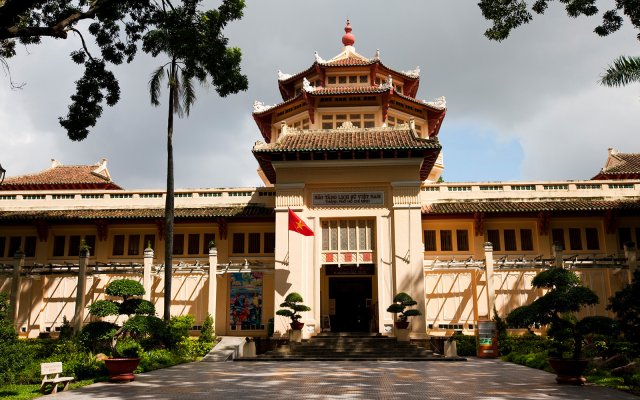





Related travel guides